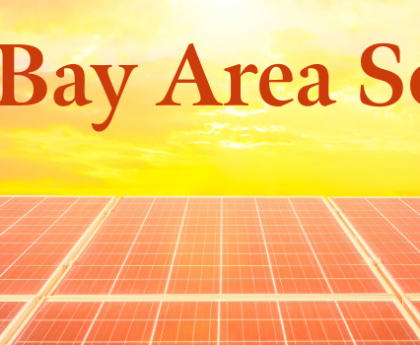When and where can I still see the partial eclipse in the Bay Area?
For those outside of this path, like us in the Bay Area, fret not: You’ll still be able to experience a partial eclipse. Wherever you are in the Bay, look towards the sun starting at around 11 a.m. during the peak of the eclipse. The sun will be high in the south and will be hard to miss, unless a very tall building is in your line of sight.
When you’ve spotted the sun, be sure not to look directly at it without eclipse glasses.
In the Bay Area, the eclipse will begin at 10:14 a.m. PST on Monday, April 8.
The “maximum bite” will be taken out of the sun at 11:13 a.m. PST to about an hour later, and the event will officially end at around 12:16 p.m. PST, according to Fraknoi.
Here in the Bay, we’ll experience about 45% of the sun’s diameter covered, and the best time to start observing the eclipse is at 11 a.m., Fraknoi said.
Just a few of the places where you can watch the partial eclipse with others in the Bay Area are Exploratorium, California Academy of Sciences, Lawrence Hall of Science, Robert Ferguson Observatory and Chabot Space and Science Center.
You can also observe the eclipse on your own or host your very own watch party. Just be sure to watch the eclipse safely.
While we get to experience just a partial eclipse this year, the next time a total solar eclipse will cross California is in 20 years on August 12, 2045.

How to view a total solar eclipse with glasses and pinhole projectors
During a solar eclipse, it is never safe to look directly at the sun without solar-filtered eyewear designed for solar viewing. Only when the moon completely covers the sun during totality will it be safe to look at it without eye protection.
If you’re looking for free eclipse glasses, check with your local public library in the Bay Area, which may well be offering them. You might also be able to snag eclipse glasses at places like the California Academy of Sciences, Exploratorium, and Chabot Space and Science Center. If you’re planning to buy eclipse glasses online, Fraknoi recommends two U.S.-based companies: Rainbow Symphony and American Paper Optics.
For a running list of events around the solar eclipse in North California, visit the Astronomical Association of Northern California website for the most recent updates.
You can also explore indirect viewing methods by making your own pinhole projector to view the eclipse safely.
The surreal experience of the total solar eclipse: What can you expect from the total solar eclipse?
Shreenivasan Manievannan, a professional photographer and Bay Area resident, will be planning to travel to Niagara Falls with the company he works for, GoPro, to capture a timelapse and photographs of the total solar eclipse.
Manievannan said that for him, the most exciting part of the 2017 total solar eclipse was seeing the day change from light to dark in just a few minutes. On top of that, he said, it was a surreal experience overall.
“You will start seeing the change in the flow of the river too [during a total solar eclipse] because the wind will suddenly stop during the eclipse,” Manievannan said. “It becomes very calm, and the birds will stop chirping. Everything looks very still.
“And once the light comes back again, everything goes back to normal,” he said.
[embedded content]
The upcoming 2024 total solar eclipse also offers scientists many great opportunities. Researchers will use various instruments and methods to observe and study the eclipse, from telescopes and cameras on the ground and in the air to satellites and sensors in space.
NASA has funded five scientific projects for the 2024 Eclipse to collect this data that’s only available during eclipses. These projects aim to study the sun’s corona and its impact on Earth’s atmosphere. Citizen scientists are also invited to contribute their observations during the total solar eclipse to help with scientific discoveries.
Tell us: What else do you need information about?
At KQED News, we know that it can sometimes be hard to track down the answers to navigate life in the Bay Area in 2024. We’ve published clear, practical explainers and guides about COVID-19, how to cope with intense winter weather, and how to exercise your right to protest safely.
So tell us: What do you need to know more about? Tell us, and you could see your question answered online or on social media. What you submit will make our reporting stronger and help us decide what to cover here on our site and on KQED Public Radio, too.
This post was originally published on 3rd party site mentioned on the title of this site



